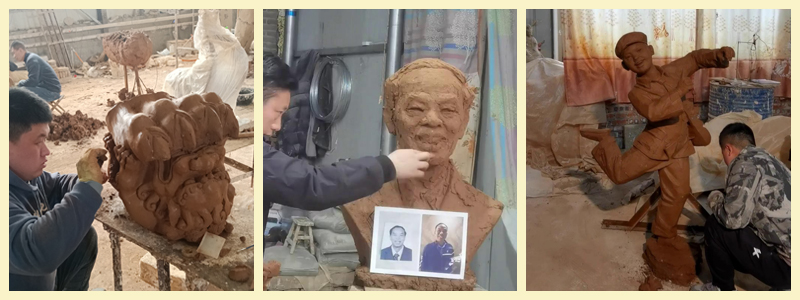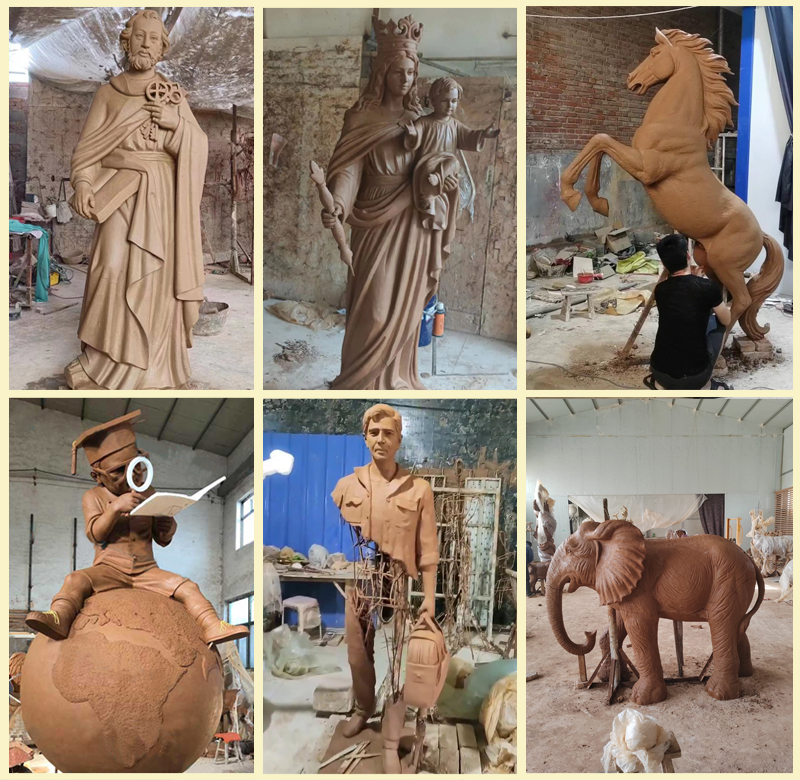Sculpture making is an ancient art, and clay mold making is an important step in it.
Clay mold mainly refers to the mold required when making bronze sculptures. Its production process requires very careful handling and patience.
Making clay molds is one of the important steps in making bronze sculptures. Before making the clay model, it is usually necessary to design and conceive the bronze sculpture and prepare the required materials and tools.
The process of making clay molds requires very meticulous handling and patience, because every detail may affect the final sculpture effect. During the production process, clay or other similar materials are used to create the shape and structure of the sculpture. Clay is a very soft, moldable material that can be easily sculpted and shaped.

After the clay model is completed, a series of treatments are required, including trimming, polishing and other steps. These steps need to be completed patiently to ensure that the details and shape of the sculpture are exactly as desired.
After the clay mold is completed, the process of casting the bronze sculpture can begin. Casting is a process of making an object by pouring molten metal into a mold. Before casting, the clay mold needs to be treated so that it can withstand high temperatures and pressure.
After the casting is completed, a series of treatments are required, including grinding, polishing and other steps, in order to achieve the final effect of the bronze sculpture.
Although clay molding is only one step in the sculpture-making process, it is a crucial one. Only through fine clay molding can exquisite bronze sculptures be produced. This process requires the professional skills and patience of sculptors, as well as their love and pursuit of art, in order to create bronze sculptures with high artistic value.
As a traditional art form, bronze sculpture not only reflects the accumulation of human history and culture, but can also inspire people’s aesthetic emotions and cultural identity. Therefore, we should value and inherit these traditional art forms so that they can continue to flourish in contemporary society.
Artists also need to maintain an optimistic and positive attitude during the creative process. Facing various difficulties and challenges, they need to continue to explore and innovate to reach a higher level of creation. In this process, we can also draw inspiration from the creative spirit of artists and use a positive attitude to deal with various challenges and difficulties in life.


